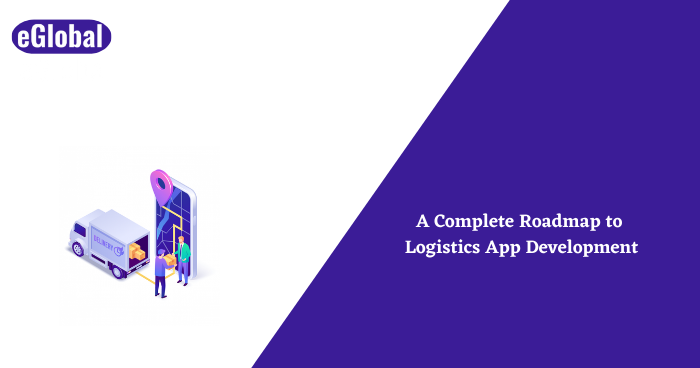

Logistics is the backbone of the global economy, ensuring that goods and products reach their intended destinations in a timely and efficient manner. With the rapid advancement of technology, logistics companies can now leverage mobile apps to enhance their operations and provide better services to their clients. In this article, we’ll discuss a complete roadmap to logistics app development, including its benefits, features, and the development process.
Before diving into the development process, it’s essential to understand the benefits of logistics app development. Here are some advantages that logistics companies can gain from having a mobile app:
A logistics app can help automate and streamline several tasks such as route planning, tracking shipments, inventory management, and communication with drivers. This automation can lead to higher efficiency and accuracy in operations, thereby reducing human errors and saving time.
With a logistics app, clients can track their shipments in real-time, enabling them to plan their operations more efficiently. Additionally, logistics companies can use the app to track their drivers and shipments, ensuring that they reach their destination on time.
Effective communication is critical in logistics operations. A logistics app can help facilitate communication between drivers, dispatchers, and clients, enabling them to exchange real-time information and updates.
A logistics app can provide clients with a seamless and convenient way to manage their shipments, from booking to delivery. Clients can track their shipments, receive real-time updates, and communicate with drivers or dispatchers, leading to an enhanced customer experience.
To develop a logistics app, there are several features that you should consider integrating. Here are some key features of a logistics app:
The app should allow clients to track their shipments in real-time, providing them with updates on the shipment’s location, delivery time, and any delays.
A logistics app should have a route planning feature that can optimize delivery routes, enabling drivers to reach their destination faster and more efficiently.
The app should have an inventory management feature that allows logistics companies to track and manage their inventory in real-time, ensuring that they have enough stock to meet client demands.
The app should provide a communication platform for clients, drivers, and dispatchers, enabling them to exchange real-time information, updates, and feedback.
The app should have a payment integration feature that allows clients to make payments for their shipments conveniently and securely.
Developing a logistics app requires a well-defined development process that involves several stages. Here’s a step-by-step guide to developing a logistics app:
The first step in developing a logistics app is to define the app’s objectives and requirements. You should identify the key features you want to include in the app, such as shipment tracking, route planning, inventory management, communication, and payment integration. You should also identify your target audience, which could be logistics companies or individual clients.
The next step is to choose the platform you want to develop the app for. You can choose between native or hybrid app development, depending on your requirements and budget. Native app development is more expensive but provides better performance and user experience. Hybrid app development, on the other hand, is less expensive and allows you to develop the app for multiple platforms simultaneously.
The user interface (UI) is a critical component of the logistics app. The UI should be intuitive and easy to use, providing clients, drivers, and dispatchers with a seamless experience. You should also consider the app’s branding and design the UI accordingly.
Once you have designed the UI, the next step is to develop the app backend. The backend is responsible for managing the app’s data, such as shipment details, inventory, and payment information. You can choose to develop the backend in-house or use a third-party provider such as Amazon Web Services (AWS) or Google Cloud.
The frontend of the app is what the users interact with. It includes the UI, navigation, and user flows. You should develop the frontend in accordance with the app’s objectives and requirements, ensuring that it provides a seamless and intuitive experience for the users.
To develop a logistics app, you need to integrate APIs (Application Programming Interfaces) from third-party providers such as Google Maps or UPS. APIs provide critical functionality such as route optimization, location tracking, and shipment status updates.
Once you have developed the app, you need to test it thoroughly to ensure that it meets your objectives and requirements. You should test the app’s functionality, usability, and performance, identifying and fixing any issues before launching the app.
Once you have tested the app and made any necessary changes, you can launch the app. You should promote the app through social media, email marketing, and other channels, ensuring that your target audience is aware of the app’s launch.
After launching the app, you need to maintain and update it regularly. You should monitor the app’s performance, fix any bugs or issues, and update the app’s features as needed. This will ensure that the app remains relevant and useful to your target audience.
Developing a logistics app can provide several benefits, including increased efficiency, real-time tracking, better communication, and improved customer experience. To develop a logistics app, you need to define the app’s objectives and requirements, choose the platform, design the UI, develop the backend and frontend, integrate APIs, test the app, launch it, and maintain and update it regularly. By following this roadmap, you can develop a logistics app that meets your business needs and provides value to your clients.

© 2017 All rights reserved.